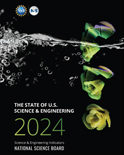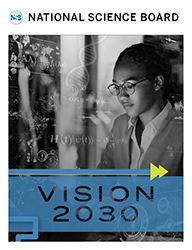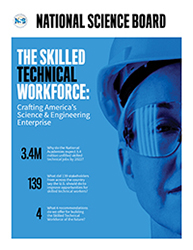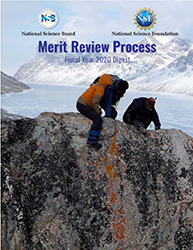Hearing on Global Science and Engineering:
Foreign Perspectives, Multicultural
and International Organizations
Summary
Tuesday, November 16, 1999
9:00a - 5:30p
National Science Foundation, Room 1235, Arlington, Virginia
I. Third Annual Competitiveness Survey
Evans discussed the Changing U.S. Competitiveness Agenda and the role of the Council on Competitiveness, which looks at how the sources of competitive advantage are shifting, international competition is growing, and the leadership role of the U.S. is changing. The insufficient investment of the U.S. in the development of the nation's talent pool is resulting in an outlook for U.S. innovation that is not as strong. Evans noted three factors contributing to the creation of competitive advantage - Internet connectivity, innovation clusters, and collaboration to leverage costs, risk, and resources. An initiative to ramp up U.S. productivity and growth has three compelling priorities. These priorities are: shoring up weaknesses preventing the U.S. economy from realizing its innovation potential; building on strengths differentiating the U.S. innovation platform from that of other countries; and expanding global opportunities to capture the benefits of technological leadership.
II. Panel: U.S. Organizations Involved in International Science and Engineering Cooperation
Dorman, in a teleconference from London, emphasized the importance of international issues in the coalition operations in which the Department of Defense is involved. One concern discussed was technology movement, particularly the possibility that the U.S. could end up working against countries with whom it has previously collaborated. The Department of Defense has put forth international cooperation programs related to the development of hardware, software, and operational capability and the development of actual systems and capabilities. The Navy runs basic programs to identify information in which it is interested, including visitor programs to provide interaction at the bench level, conference promotion, and collaborative R&D programs.
Getzingerpresented an overview of selected activities of the American Association for the Advancement of Science (AAAS), as well as comments on two components of the charge to the Task Force, related to the federal institutional framework for educational research and NSF's leadership role in the 21st century. AAAS activities include publication of the premier Science magazine, a number of programs including science education, science policy, and international programs, and affiliate relationships with worldwide organizations, providing a huge research base. Getzinger expressed the opinion that the Task Force should closely examine NSF playing a stronger role in institutional relationships dealing with research and education as well as NSF having an expanded role in the human impacts on the global environment.
III. Panel: Partnership Programs
Eisenstein described the establishment and subsequent operation of the U.S./Israel Binational Science Foundation (BSF). The BSF is funded from the interest, currently about $13M per year, on an endowment jointly established by the U.S. and Israel. It makes grants primarily in the areas of health and life sciences, physics, chemistry, and mathematics, for binational cooperative projects. Efforts are presently underway to expand the program to include researchers from other parts of the Middle East region. The original endowment for the BSF used Israeli residual foreign aid money and a matching contribution through a State Department appropriation. This endowment frees the BSF from dependence on budgetary allocations from the sponsoring agencies or from the legislatures. The binational Board of Governors of the BSF meets annually to oversee the policy and programs; their oversight helps assure that the BSF criteria of scientific excellence, mutual benefit, and equitable balance are maintained.
Sher discussed the makeup of the Civilian R&D Foundation for the Independent States of the Former Soviet Union (CRDF) and its four basic cooperative programs, all of which require a minimum level of cost sharing. The principal program, the Competitive Grants Program, adapts the NSF system and philosophy of merit review to the making of cooperative research grants. Sher underscored the importance of continued NSF funding for CRDF, to strengthen the regional infrastructure. Achievements of the CRDF include: funding human resources infrastructure; developing a model for industrial R&D collaborations; building institutions; and empowering U.S. programs. Sher pointed out that because CRDF is a private organization, it has more flexibility in decisionmaking, responding to opportunities, and program design. He believes that the CRDF model should be replicable as long as there is commitment to the general goals of bridging categories of cooperation and assistance.
Hardie described the creation of the Canadian International Development Research Centre (IDRC) in 1970 to encourage and support research into the problems of developing regions and to assist the regions in building up research capabilities. The IDRC is funded so as to enable a degree of independence from the Canadian political system. Hardie noted that the focus is placed on production and knowledge sharing of all kinds, as well as the application of scientific and technical knowledge to the social and economic advancement of developing regions. The IDRC has emphasized social and technological innovation rather than science and technology, and has shifted toward more partnerships and joint ventures with other donors in order to expand the quality and quantity of resources devoted to mobilizing and enhancing research capability.
Chiang provided a historical background of the U.S. Antarctic Program which traces its origin to collaboration regarding the International Geophysical Year. Chiang described how the Antarctic Treaty provisions establish cooperation amongst nations operating on the continent, resulting in the creation of an environment rich in opportunity for multilateral partnerships. While the State Department represents the U.S. in policy issues, it does not take an active role in activity coordination amongst the cooperating nations. NSF's stewardship for U.S. interests and environmental protection in the Antarctic has led to the evolution of the NSF Office of Polar Programs. Chiang expressed the opinion that the success of the treaty system with respect to international cooperation is attributed to the scientific objectives, the mutual benefit provided by the collaboration amongst international organizations, and the direct involvement of program directors and managers enabling the establishment of boundary conditions and the subsequent commission of resources for project implementation.
IV. Panel: Foreign Models and Perspectives of International Science and Engineering Cooperation
Martin-Rovet described the shift of French educational focus from dissemination of the French language/culture to the aim of training scientists and engineers. Because the few students who travel from the U.S. to France do so to study humanities, not science, and the French students who travel to the U.S. generally do so to study science, Martin-Rovet emphasized the need to balance the exchange of French and U.S. students, as well as the need to make better mutual use of the capabilities of both countries. Martin-Rovet discussed the objectives of the Centre National de la Recherche Scientifique (CNRS) in the U.S. - to represent French science, facilitate contacts between French and American scientists, and provide enhancement and fund cooperation - and the manner in which the CNRS evaluates programs and provides peer review for the political bodies. Efforts are currently underway to integrate academic research with industry, provide education in the handling of technology transfer, and increase visibility of French science. Martin-Rovet discussed the availability of fellowships for U.S. post-doctoral students to travel to France, noting the lack of interest in these fellowships, and discussed negotiated agreements between the CNRS and universities such as the University of Illinois as well as the attempted integration with industry.
Kuramochi described the 1995 enaction, in response to economic difficulties, of the Japanese Science and Technology Law, the Law's purpose in promoting the research development environment and aiming Japan for a leadership position in science and technology, and the resulting development of the five-year Science and Technology Plan, aimed at improving educational opportunities in national labs and universities, improving the environment in R&D sites, and opening labs to the world. As Kuramochi noted, a review of the performance of the five-year plan has shown that it has helped bring science and technology to national policy levels. Special coordination funds have been provided to promote interagency science and technology, recognizing the importance of having joint programs among agencies. Kuramochi described collaborative U.S./Japan agreements, including the Science and Technology Agreement negotiated under President Reagan and Prime Minister Takeshita and the Common Agenda, a cooperative partnership program created in 1993 to tackle global issues bilaterally. As an example of a very specific project, Kuramochi described the International Cooperative Research Project of 1989 which provided five years of international joint research funded in-kind by Japan and its partner, the research to be performed at the best-suited research institutes. Fellowship programs were established in 1988 to correct imbalances in the number of scientists performing research in Japan. Kuramochi discussed the recent kick-off of the Millenium Project targeted toward information, Japanese societal issues, and the environment.
Litvak discussed the comparatively high Chilean investment in science and technology in relation to other Latin American countries, noting the low level of investment in comparison to the U.S. The Millenium Science Initiative has been negotiated with the World Bank to create high quality research units and has resulted in a subsequent controversy in a country where research has traditionally been university-based. The University of Chile has an initiative aimed at promoting international research collaboration by stimulating international interest in the university's programs and projects and by mobilizing external resources through collaborative activities. The promotion of research alliances has proven the most winning strategy by providing grants for development, awards from foundations and other grantors, and major in-kind collaborators such as Lucent Technologies. Litvak indicated that there is a need for private sector investment in science and technology, noting that increased funding for research by international collaboration provides the best strategy.
V. Keynote Address: Globalization of the Science and Technology Workforce in the U.S.
Good presented NSF-generated data regarding the drop in U.S. investment in R&D in relation to the GDP, noting that U.S. institutions lack the understanding of the significance of these changes. There has also been a dramatic shift in funding sources for U.S. research as private sector funding has increased in relation to government funding. Workforce data indicates an increasing percentage of foreign-born doctoral students in science and technology. The dependence on foreign nationals in the U.S. science and technology enterprise has caused issues of concern in terms of unemployment and depressed wages, particularly wages paid to graduate students and university post-doctoral students. Good indicated an uncertainty regarding whether the availability of foreign students discourages U.S. native talent from pursuing scientific careers. Good indicated that while the U.S. has created revenue by its edge in the sale of intellectual property, the availability of intellectual property around the world will simply make the playing field more even. In R&D expenditures, the U.S. is neglecting important educational opportunities by not creating new engineers outside of the health sciences. Good expressed the opinion that the U.S. must refocus its research funding at the federal level to creating the best quality people in the world. The free flow of scientists must be allowed since the majority of science is done outside of the U.S., creating the need to know what is happening elsewhere so as to enable global capitalization.
VI. Panel: Development Assistance and International Organizations
Kirkland described the mandates of the U.S. Agency for International Development (USAID) as the promotion of sustainable development and the provision of humanitarian assistance. It has established as its goals broad-based economic growth, building sustainable democracies, human capacity building through education and training, population stabilization/human health protection, environment protection, and humanitarian assistance in crises and transitions. USAID established a policy in 1997 laying out the standards and criteria for determining research priorities. Among the areas which USAID has identified as not fitting its criteria is research for training scientific or technical personnel. Due to economic considerations and the incidences of students failing to return to their home countries, USAID has shifted its capacity building endeavors from bringing overseas students to the U.S. for training to providing in-country and on-the-job training in conjunction with applied research activities. Kirkland discussed the channeling of the budget to the areas of population, health, nutrition, and agriculture, indicating that much of the research is programmatically oriented.
Crawford discussed the evolution of the World Bank's science and technology funding, noting the Bank's attempts to increase the size of grants to top people and the remaining problems resulting from researchers working in isolation. A new approach has been adopted by the Bank which is discussed in the Knowledge for Development Report, the Bank's flagship statement on development. One conclusion made in the report is that for advanced countries, knowledge may be the most important factor in determining the standard of living. The Bank has made a large commitment to support science and technology and is working on the development of a science and technology strategy covering all sectors and raising the profile of support for science and technology. The Bank will attempt to cooperate with partners in international, national, and nongovernmental organizations and will seek to use its convening power and resources to invigorate science in the developing world.
Wolff addressed the current science and technology situation in the region, critical regional needs, the Inter-American Development Bank's (IDB) previous role, the IDB's new strategy, and the IDB's instruments for supporting science and technology. The critical needs in the region are to incorporate new technologies into processes through better international cooperation as well as a need to increase the amounts and effectiveness of science and technology investment and primary through higher education. In its previous role, the IDB focussed on institutional strengthening of science research and funding institutions but that reviews concluded that the payoffs were inadequate with respect to changes in the productive sector and utilization by industry of new technologies. The new strategy focuses on ensuring that technological development can take place by encouraging innovation, supporting technology development rather than simply supporting research, being more selective in supporting science research and training while encouraging links with the productive sector, increasing the overall investment in education and training, and increasing support for developing countries.
NSB/ISE 00-4




